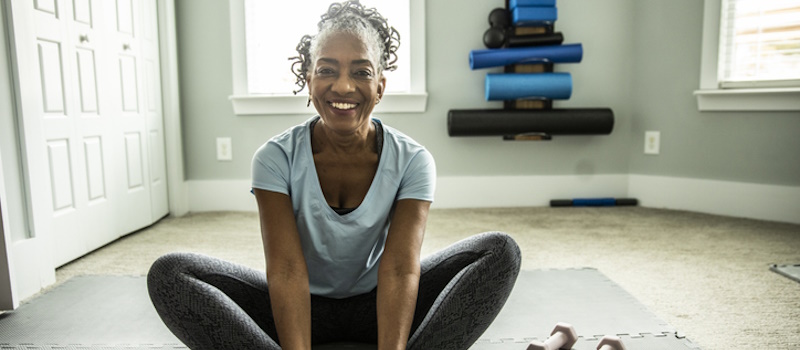Setting up a Home Gym: Where to Start
Setting up a Home Gym: Where to Start

Setting up a Home Gym: Where to Start
Setting up a proper home gym requires more than getting a pair of dumbbells to keep in the corner. Here's how to set up a home gym designed for the fitness training you want to do.
Step 1: Determine Your Fitness Goals
Before you even look at equipment, first identify your general fitness goals. Do you want to build muscle, increase flexibility, or enhance cardiovascular health? You can choose all three or a single one, so long as you're clear on goals.
Your goals will determine what type of equipment you purchase for the home gym. Reserve most of your budget and most of your space for the equipment that'll provide the training you most want.
Step 2: Assess Your Space
Your space determines the physical constraints that you must work within. Actually look around the space and see:
- How much floor space do you have for equipment?
- Is the floor strong enough to support large equipment?
- Can you safely swing equipment without breaking windows?
- Do you need padding on the floor in case equipment (e.g., weights) is dropped?
Most floors should be able to support basic equipment or even something like a treadmill or exercise bike. If you're looking at an especially heavy all-in-one gym or lots of large dumbbells, the equipment might need to be on the concrete of a garage or basement floor.
Step 3: Determine Your Budget
The last step before buying equipment is to determine your budget. This depends on your personal financial situation but know that you can start home gyms with large or small budgets.
You should divide the budget according to where you want to spend the most on equipment.
Step 4: Start With Entry-Level Equipment
No matter what your budget is, purchase entry-level equipment to start with. You won't know what features are important and which aren't unless you've previously had a home gym.
Starting with entry-level equipment will keep you from spending a lot on something you're not happy with in the long term. You could even end up spending on equipment that doesn't get used in a few months.
Once you see what equipment gets used the most and which features you like, you can upgrade as your budget allows. If you're unsure what to purchase first, a dumbbell set, treadmill, stationary bike, and fitness ball would all be good choices.
Step 5: Check Online Listings
Whenever you invest in weight-lifting equipment, don't be afraid to check listings on Facebook Marketplace or similar sites. Equipment may be a little less expensive but still in great working condition.
If there is a question about a certain equipment's functionality, weight-lifting equipment is usually fairly straightforward to test out and inspect. You might be more hesitant to get a treadmill or bike, which could have screens and internal component issues.
Step 6: Insure Your Equipment
If you're making a significant investment in home gym equipment, make sure your equipment is properly insured. Some homeowners, condo, and renters insurance policies provide limited coverage for valuables, and certain gym equipment might be considered. It's always best to check with your insurance agent and review your current coverages.
